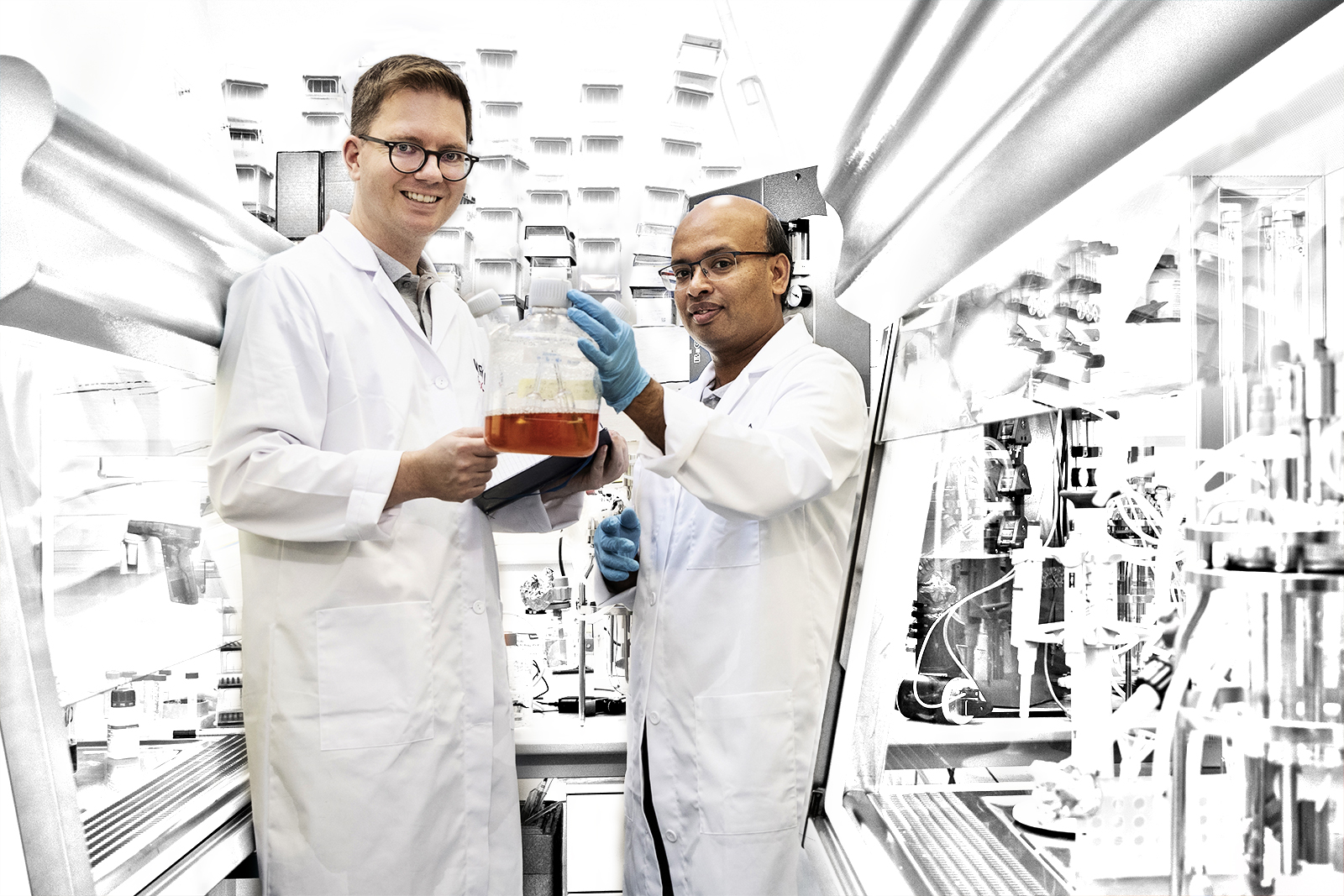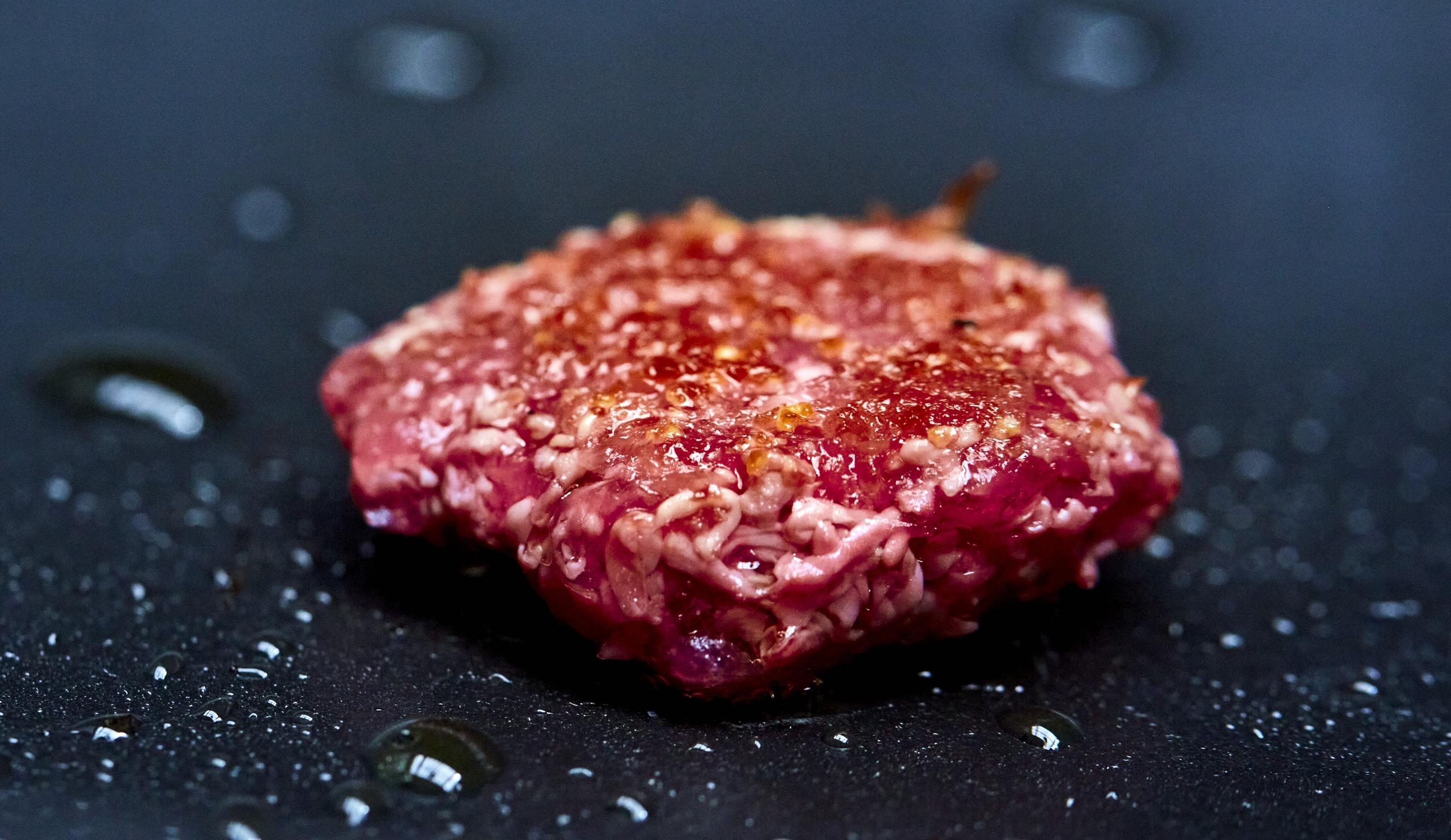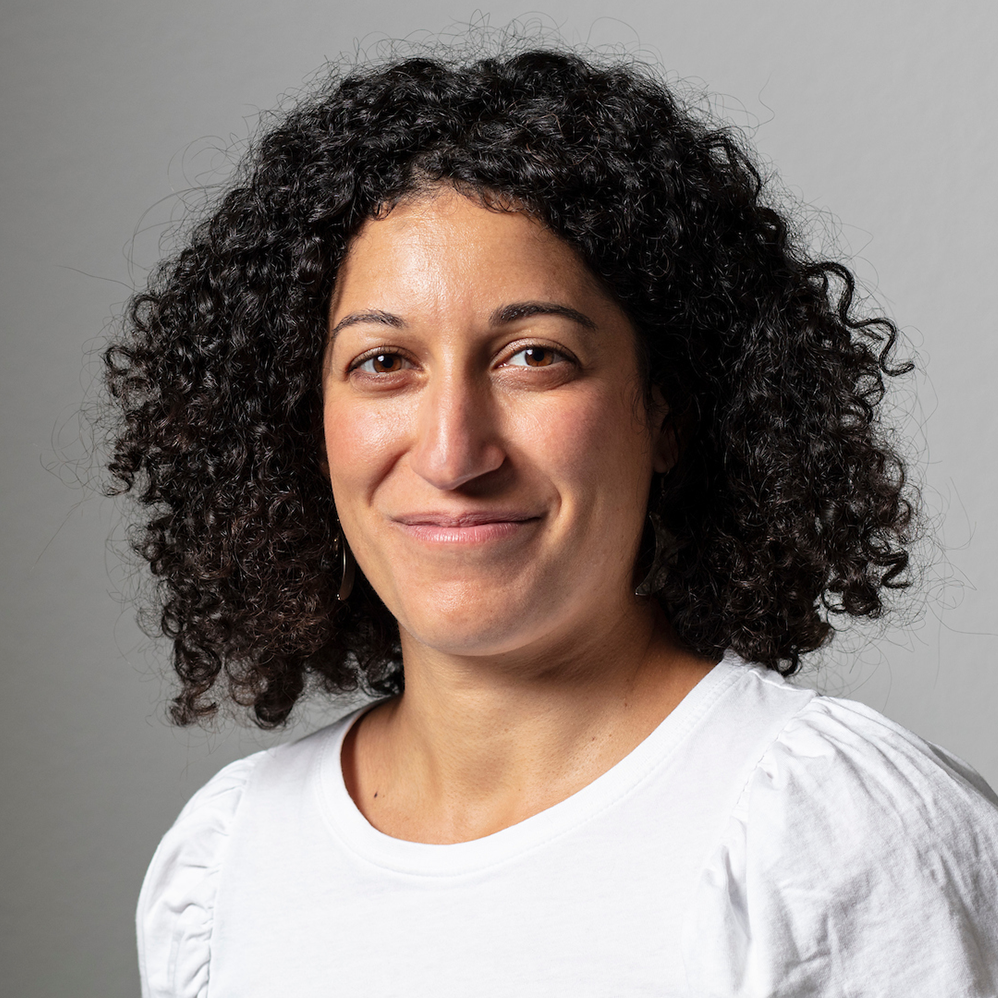
Cultured meat: revolution or hype?

Lab-grown chicken nuggets are on sale in Singapore. In Switzerland, a start-up is working on cultured beef steak. Although it’s possible to produce 1,000 tonnes of meat from just one gramme of cells, many questions remain about the technology’s safety and ecological footprint.
In 2020, Singapore became the first country to start selling chicken nuggets made by growing animal cells – a technique that does not require hectares of farmland, antibiotics or killing millions of animals.
As one of the most urbanised and least arable countries in the world, the city-state aims to produce 30% of its food locally by 2030, instead of the current 10% – even if that food comes from a lab. Steak fillets artificially developed by a Swiss start-up could be the next products to appear on Singaporean plates.
I have no plans to travel to Singapore, but perhaps I won’t have to wait long to test the results of this new food technology. Cultured meat (also known as synthetic or in vitro meat) may also arrive in Switzerland in less than three years, according to producers.
This technology could help reduce the environmental impact of meat production from farmed animals – especially in Switzerland, where the consumption of meat is high (51 kilogrammes per capita per year). It could also alleviate the Swiss government’s concernsExternal link about food security, as crops are threatened by climate change and grain feed for livestock has become limited and more expensive due to the war in Ukraine. But before reaching our plates, in vitro meat will have to overcome many challenges, from very high costs to strict European regulations.
Steak without suffering
“We produce real meat, without having to breed whole animals for 18 or 24 months or slaughter them,” says Christoph Mayr of Mirai Foods, the first Swiss company that is cultivating meat. On the telephone, Mayr has the serious, confident voice of a seasoned, middle-aged entrepreneur.
In reality, he is 37 years old and was previously an industrial engineer. He tells me that he does not like the taste of plant-based alternatives to meat and that the long list of ingredients never convinced him. This prompted him to focus on cell cultures. The start-up, which Mayr founded near Zurich in 2019, is now preparing to launch cultivated beef in Singapore in 2023. “There, the process to get approvals is faster,” he says.

In the EU, the procedure to assess the safety and nutritional validity of cultured meat is governed by the strict Novel Foods RegulationExternal link and takes at least 18 months. Switzerland also recognises this regulation. Mayr, who hopes to be able to sell his product throughout Europe by 2025, believes that Switzerland would be a good testing ground for his cultivated meat, because it is small and the population is willing to pay for quality and environmental protection.
Mayr’s enthusiasm has already convinced several Swiss and European investors who are active in biotechnology, food technology and real estate. In 2021, the company reported that its capital had increased from $2.4 million to $4.5 million. In global terms, Mirai Foods is still small: investment in the sector has more than doubled from $410 million (CHF391 million) in 2020 to $1.36 billion in 2021.
Complex and expensive production processes
But there are still many difficulties facing companies like Mirai, one of which lies in the production process. Once stem cells are harvested through biopsy from live cows, or from a fresh piece of meat, workers isolate different types of cells (for instance muscle and fat cells). The cells are then put in a machine called a bioreactor, where they grow and reproduce. The technology relies on the complex principles of cell cultivation and tissue engineering, which were developed in the pharmaceutical industry to create antibodies, vaccines and artificial organs. This makes production very costly. “People are prepared to pay as much as CHF10,000 for a replacement kidney, but not for a piece of meat the size of a kidney,” says Mayr.
Growing meat in the laboratory is also energy-intensive because a constant temperature of 37 degrees Celsius must be maintained inside the bioreactor to allow the stem cells to proliferate.

When the cells have reproduced, they are distributed onto “moulds” (scaffolds) to stimulate them to differentiate into connective tissues, muscles and fats. At this point, the cells can be combined to form the desired cut of meat – such as a steak or filet.
Mayr admits that making the process cheaper and scalable is still a challenge. Until recently, the most-used medium for cell cultures was foetal bovine serum (FBS), an expensive by-product of the meat industry.
Mayr’s team spent years working to create a replacement in the lab. They made a nutritional serum that was rich in the substances the cells need to grow and proliferate – such as amino acids, vitamins, minerals, sugars, hormones and lipids – but harmless to animals and at least somewhat cheaper. The company has not specified whether its serum is free of animal components.
The retail giant Migros, one of Mirai’s competitors on the Swiss market, has invested in the Israeli company Aleph Farms, which uses fermentation techniques to replace the proteins found in FBS. United States-based Eat Just, which produces the chicken nuggets sold in Singapore, has developed synthetic alternatives to the animal serum. Thanks to this, the nuggets, which used to cost $50 a piece, now cost $23 a portion. But the company says it remains a long way from mass production and profitability.
Safety and sustainability still in doubt
Mayr is convinced that these obstacles can be overcome in the short term because the technology that allows to turn cells into meat is evolving rapidly – 1,000 tonnes of meat can now be obtained from one gramme of cells, he says.
But some studies have questioned the sustainability and safety of cultivation technologies. Raising cattle, pigs and chicken produces greenhouse gases, but so do the machines used to grow meat. In 2019, researchers at the University of OxfordExternal link projected that using non-renewable energy sources to produce meat in bioreactors could actually have a more significant impact on the climate in the long term than farmed meat. While cows emit methane, which stays in the atmosphere for 12 years, cell cultivation emits carbon dioxide that accumulates over millennia, the Oxford study says. However, the true impact of cultured meat on greenhouse gas emissions remains contested, with other studiesExternal link showing more positive results.

A French studyExternal link also warned of the risk of bacterial contamination in bioreactors that are not entirely sterile, especially when manufacturing is scaled up, and of abnormal cell multiplication, similar to that of cancer cells. There is also a lack of government regulation regarding the nutritional composition of these meats and the addition of micronutrients such as iron.
And a survey of more than 6,000 participants in ten countries showed that people are disgusted by the idea of meat produced in a bioreactor. “Cultured meat is perceived as unnatural,” says Michael Siegrist, professor of consumer behaviour at the Swiss federal technology institute ETH Zurich, who led the study.
Faraway revolution
Research shows that even if lab-grown chicken nuggets and beef steaks make it to the shops, they will remain niche, luxury products. Supplying even just 10% of the meat market would require the construction of thousands of factories with hundreds of bioreactors running simultaneously, according to an analysisExternal link.
Iris Haberkorn, an ETH Zurich food scientist based in Singapore, says it will be difficult to lower costs enough to make cultured meat a commercially viable alternative. “I see more potential in other technologies,” she says, citing microalgae, a possible source of alternative protein that she is studying in a new ETH lab in Singapore.
Mayr remains convinced that sooner or later prices will fall and cultivated meat will hit big retailers’ shelves at competitive prices. “The political will to change the traditional model of meat production is becoming stronger,” he says.
I can imagine acres of steel bioreactors replacing Swiss meadows and grazing cows, and a sense of anguish comes over me. But what if this were to finally stop our chronic hunger for meat?
My journey through the food technologies of the future ends here for now! But you can always email me to share ideas or comments or follow me on Twitter @sara_ibrah
Edited by Sabrina Weiss
More

In compliance with the JTI standards
More: SWI swissinfo.ch certified by the Journalism Trust Initiative





























You can find an overview of ongoing debates with our journalists here . Please join us!
If you want to start a conversation about a topic raised in this article or want to report factual errors, email us at english@swissinfo.ch.